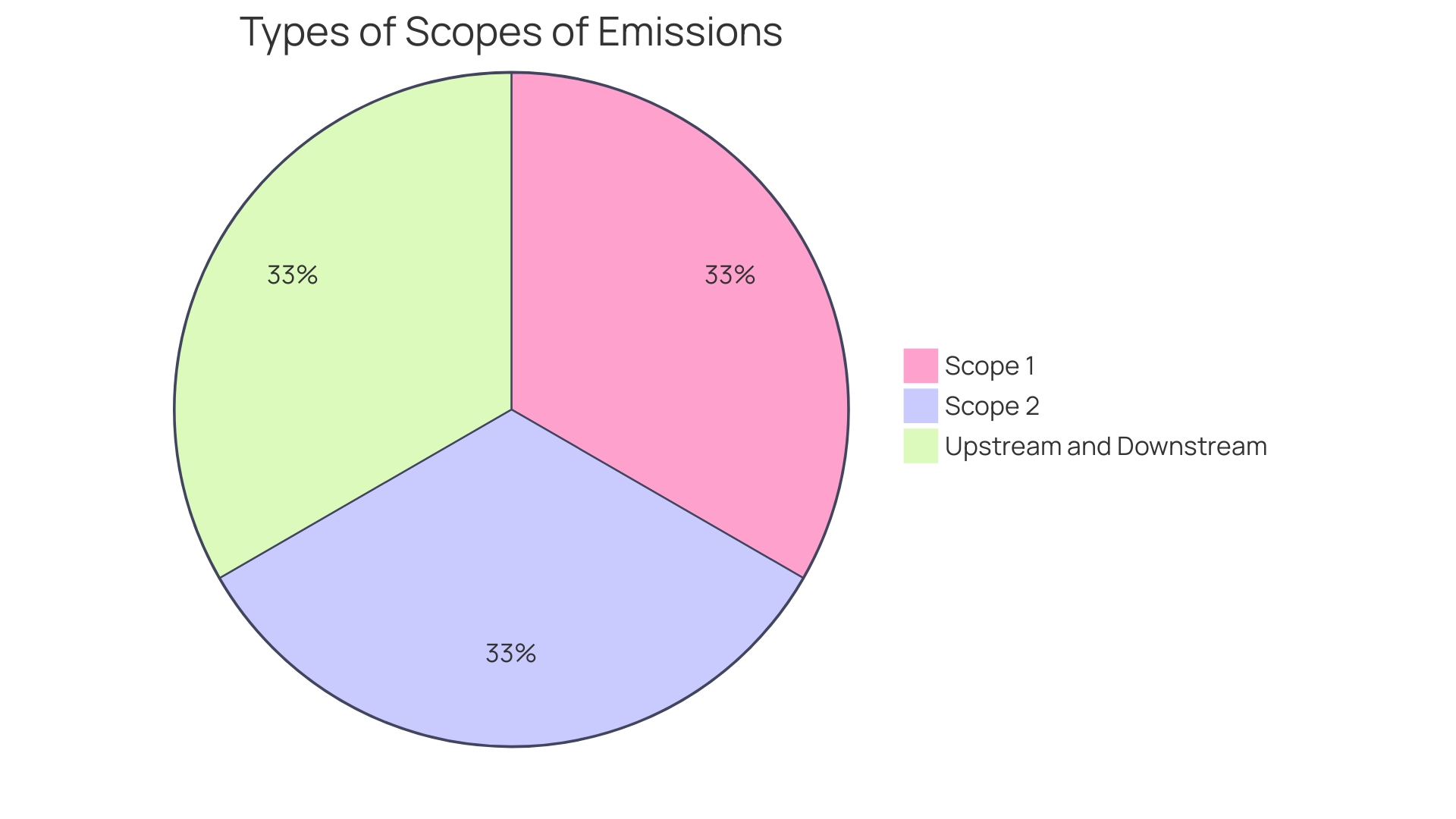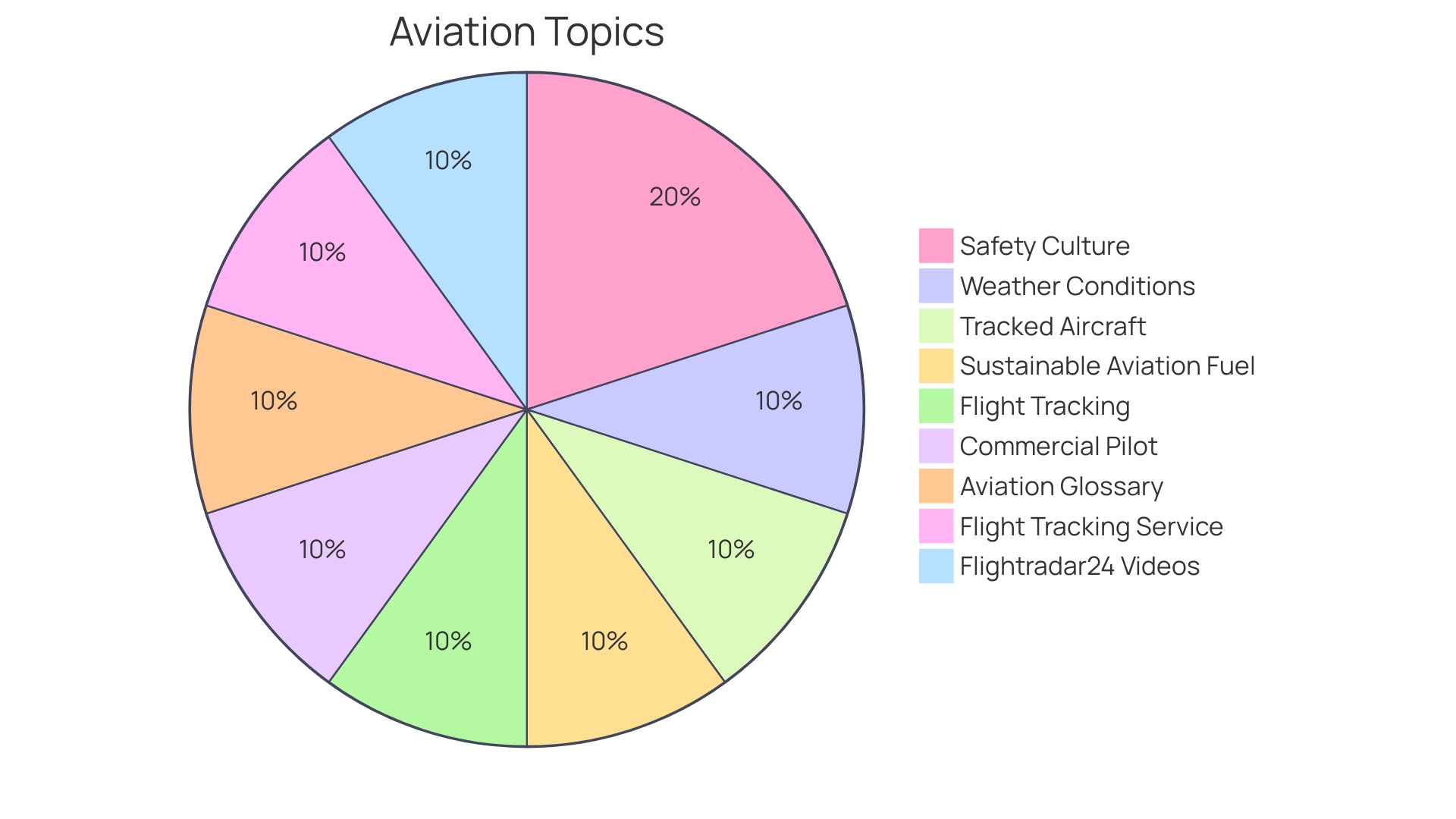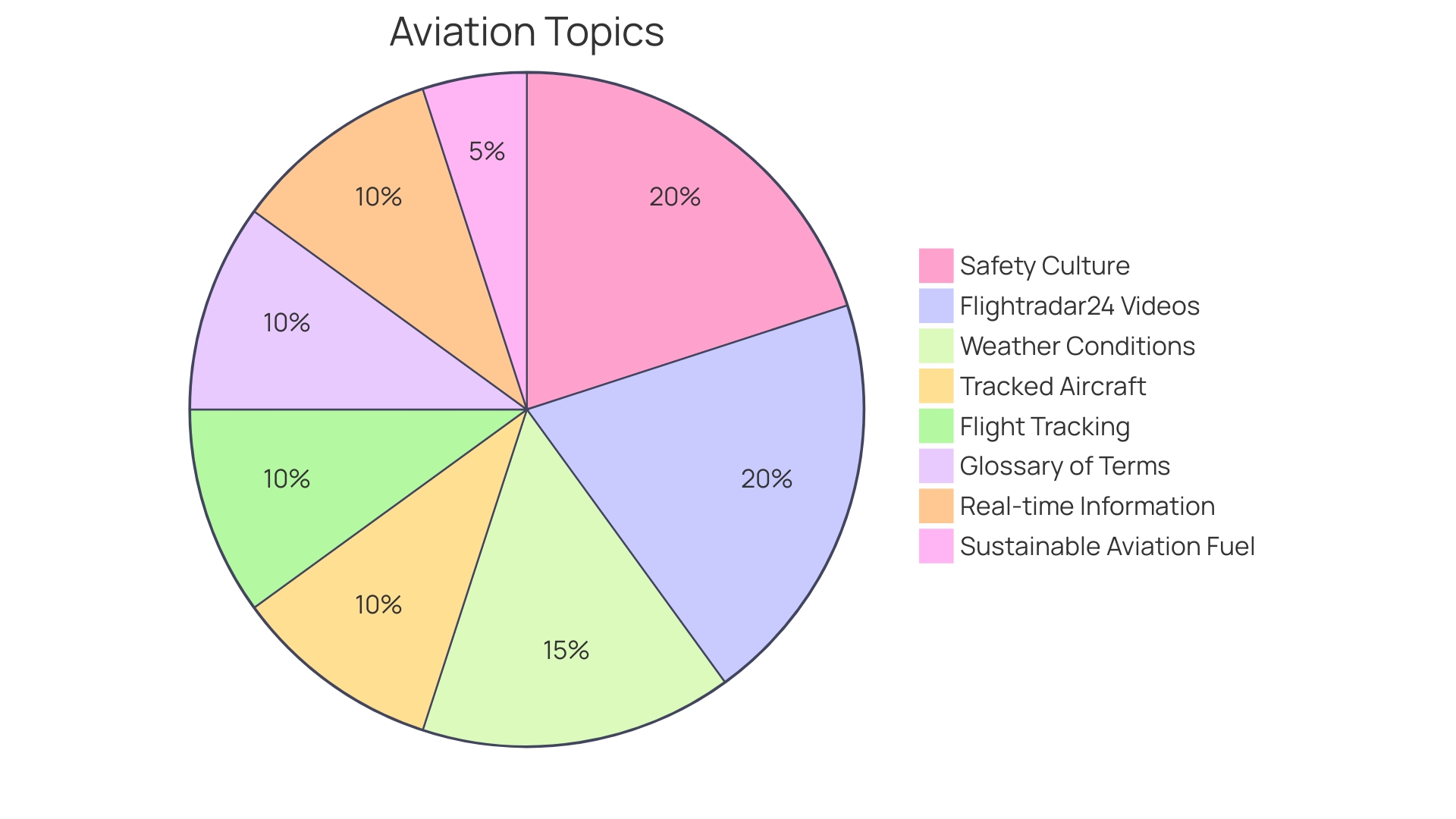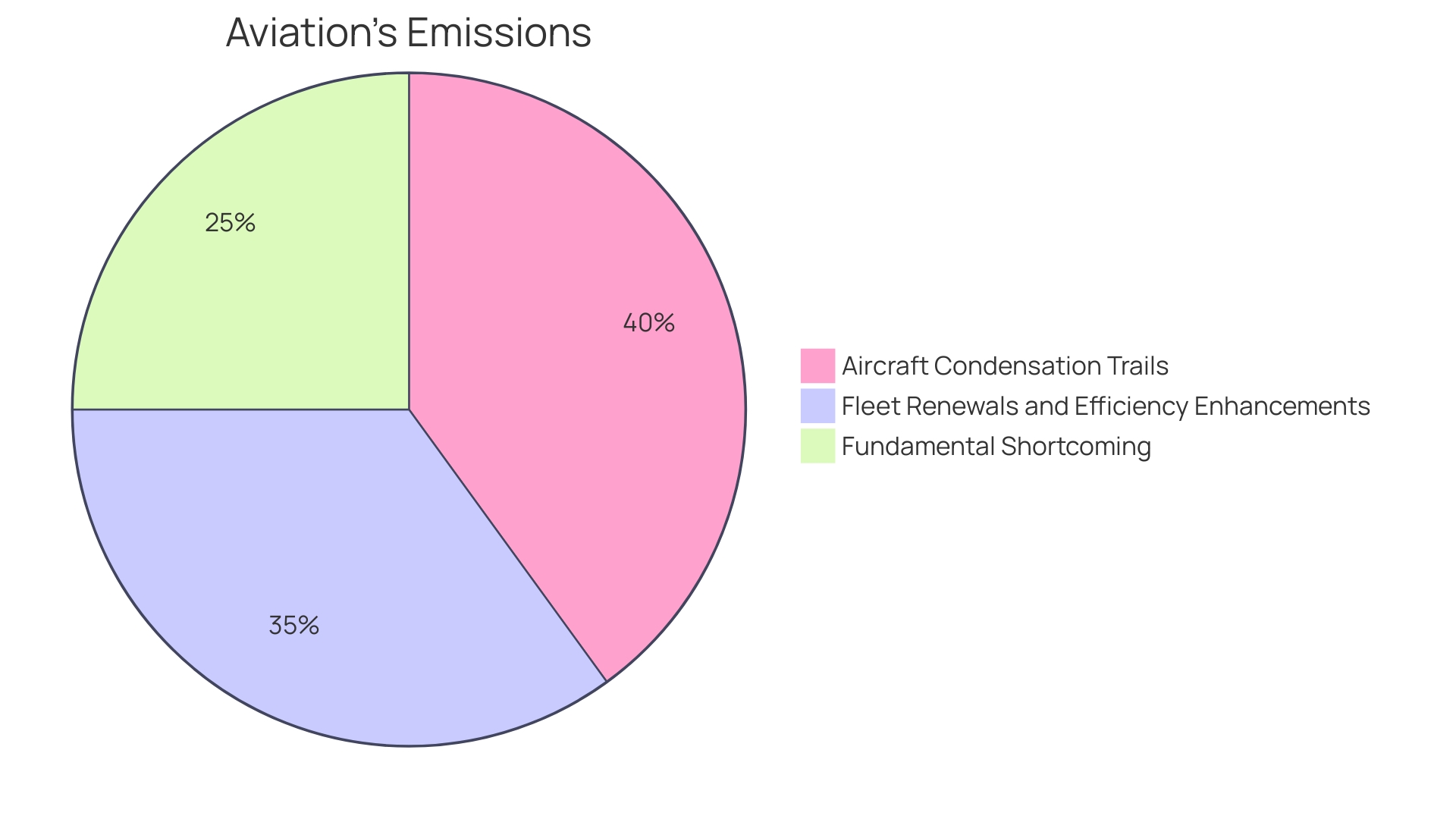Introduction
The aviation industry's environmental impact is a stark reality that cannot be ignored. With carbon dioxide emissions doubling since the mid-1980s and the potential to consume a quarter of the CO2 budget allocated for global warming mitigation, urgent action is needed. Non-CO2 emissions exacerbate the issue, affecting climate change and air quality near airports.
The industry stands at a crossroads, with the urgent need to reconcile its growth with environmental sustainability. Sustainable aviation fuel (SAF) and electrification are promising alternatives, but widespread adoption remains a challenge. The industry must address key obstacles and collaborate to achieve a sustainable future.
The transition to SAF is imperative, offering a cleaner alternative to conventional fuel. Carbon neutrality efforts, intelligent aircraft design, policy initiatives, and technological innovations like hydrogen and electric aircraft are shaping the industry's future. As the aviation sector navigates climate change challenges, a sustainable transformation is not just regulatory compliance but an existential necessity.
Collaboration, innovation, and leadership are crucial to reinvent the skies and ensure a greener aviation sector.
Environmental Impact of the Aviation Industry
With commercial aviation contributing to approximately 3.5% of human-made alterations to our planet's energy balance, the stark reality of its environmental footprint cannot be overstated. The industry's carbon dioxide (CO2) emissions have alarmingly doubled since the mid-1980s, and now pose the risk of consuming a quarter of the CO2 budget allocated to keep global warming below 1.5°C by 2050. This is compounded by non-CO2 emissions, such as nitrogen oxides (NOx) and contrails, which exacerbate the impact on climate change.
Moreover, these emissions contribute to poor air quality, affecting human health, especially near airports where NOx and ozone levels are heightened. The noise and lead pollution from airport operations and older aircraft further intensify the environmental and health implications.
Recent discussions at COP 27 highlighted the urgent need for effective climate action, emphasizing a shift towards net-zero emissions—a balance between emitted and removed greenhouse gases (GHGs) from the atmosphere. However, the international community faces an 'action gap', as the current emission pathways starkly contrast with the limited carbon budget remaining under the Paris Agreement.
Innovative solutions, such as the use of sustainable aviation fuel (SAF), which reportedly emits 70% less CO2 than conventional fuel, are being explored. Despite its benefits, SAF powers only 0.1% of flights, indicating the challenges ahead for the widespread adoption of greener fuel alternatives. The electrification of aviation is another promising avenue; small electric aircraft are already in use for short distances, with studies suggesting significant potential for reducing aviation's environmental impacts.
The aviation industry, therefore, stands at a crossroads, with a pressing need to reconcile its growth with the imperative of environmental sustainability. While advancements like fleet renewal and operational efficiency gains offer some respite, these measures alone are insufficient to address the magnitude of the climate challenge posed by aviation emissions. A holistic and accelerated approach towards sustainable practices is essential for the industry's future and the protection of our planet.

Key Challenges in Sustainable Aviation
The aviation industry is at a critical juncture in its pursuit of sustainability. The sector's transition to environmentally friendly practices hinges on overcoming key obstacles, notably the pursuit of alternative fuels capable of significantly cutting carbon emissions. Bio-based Sustainable Aviation Fuel (SAF) has emerged as a promising solution, with the potential to reduce flying's carbon intensity by over 80%.
However, Saf's current global aviation fuel market share is a mere fraction, under 0.1%, due to challenges like limited supply, fragmented demand, and high costs.
Innovative partnerships and pioneering flights, such as the milestone transatlantic journey powered solely by alternative fuels by Virgin Atlantic, underscore the industry's commitment and progress. However, these endeavors also highlight the pressing issue of inadequate fuel supply and the need for supplementary technology to achieve emissions targets.
Furthermore, the industry must tackle non-CO2 environmental impacts, including the warming effect of contrail cirrus formations, which recent research suggests may exceed the impacts of CO2 emissions from air travel. The sector's environmental footprint is significant, with aviation contributing roughly 3.5% to human-induced changes in the Earth's energy balance, and CO2 emissions from aviation potentially accounting for a quarter of the CO2 budget to limit warming to 1.5°C by 2050.
Strategies for green aviation emphasize collaboration between stakeholders across aviation, energy industries, and the public sector. Policy levers and financial incentives are crucial in fostering a conducive environment for SAF scaling. The US aviation sector, a significant emissions contributor, faces the challenge of decarbonizing a fleet with a long operational lifespan.
Consequently, sustainable fuels are deemed the most viable option for mid-century decarbonization.
In sum, while the aviation industry recognizes the urgency of sustainability, evidenced by commitments such as Avianca's to maintain accessible air service, the path forward requires concerted efforts worldwide. Policymakers and industry leaders must bridge the action gap and develop new approaches for a transformation towards net-zero emissions, ensuring that the skies of tomorrow are not only busier but greener.

Sustainable Aviation Fuel (SAF): A Cleaner Alternative
The aviation industry stands at a pivotal moment in its history, facing the dual challenge of meeting increasing travel demands while reducing its environmental footprint. Sustainable Aviation Fuel (SAF) is at the forefront of this transformation, offering a cleaner, greener alternative to conventional jet fuel. Derived from renewable resources such as biomass, waste oils, and even synthetic pathways, SAF has been recognized for its potential to slash carbon emissions, with some studies indicating a reduction of up to 80% over the fuel's lifecycle compared to fossil fuels.
Pioneering companies like Virgin Atlantic are not just embracing the concept of SAF but actively demonstrating its practical implementation. Their commitment to sustainability extends from revamping their fleet for enhanced fuel efficiency to embedding a culture of responsibility throughout the customer journey. Virgin's milestone flight powered entirely by SAF is a testament to the viability of these fuels in real-world aviation contexts.
Airbus, too, is pushing the boundaries of innovation by aiming to make their aircraft fully compatible with SAF by 2030. In collaboration with industry partners such as Emirates and Neste, Airbus is scaling up efforts to expand the SAF market, matching lofty ambitions with tangible actions. Neste's initiative, Neste Impact, exemplifies the proactive steps companies are taking to meet sustainability targets and make a direct impact on emissions.
Despite SAF's benefits and the advancements made, its adoption remains limited, with only 0.1% of flights currently powered by it. This underscores the importance of debunking misconceptions around SAF and educating both consumers and stakeholders about its significance. With the right information and partnerships, the implementation of SAF can be accelerated, paving the way towards a net-zero carbon future for aviation.
The journey to decarbonizing aviation is complex, requiring a nuanced understanding of the trade-offs and co-benefits associated with various feedstocks for biomass production. Strategic cultivation and processing can optimize the supply chain, minimize costs, and enhance the sustainability of SAF production.
As the industry progresses toward more sustainable practices, it is confronted with the stark reality of its environmental impacts. With commercial aviation contributing to approximately 3.5% of human-induced climate changes, and CO2 emissions from the sector having doubled since the 1980s, the push for solutions like SAF becomes increasingly urgent. Near airports, the negative effects on air quality and human health due to elevated levels of pollutants, including NOx and ozone, along with noise pollution, further emphasize the need for sustainable interventions.
In conclusion, the transition to SAF is not just a possibility but an imperative for the aviation industry. With continued innovation, consumer education, and strategic collaborations, the industry can forge a path to a sustainable future, ensuring the skies remain open for generations to come while preserving the planet.

Carbon Neutrality and Carbon Offsets in Aviation
The aviation industry, responsible for approximately 2% of global CO2 emissions, is on a pressing quest to achieve carbon neutrality amid projections of increasing emissions. Carbon offsets represent a strategic tool in this endeavor, allowing airlines to compensate for their emissions by funding external projects that reduce CO2 elsewhere. These projects encompass a range of initiatives, from renewable energy ventures to forest conservation efforts, each contributing to the reduction of emissions in diverse sectors.
To exemplify, Flexport's Sustainable Aviation Fuel Program underscores the sector's commitment to decarbonization despite the high energy demands and limited alternatives for aviation. Moreover, companies like Graphite introduce innovative carbon dioxide removal techniques that promise permanence, affordability, and scalability, aligning with the International Civil Aviation Organization's 2050 net-zero emissions goal. As the industry faces scrutiny for its environmental footprint, these measures are not just about offsetting emissions but are part of a broader, more complex commitment to sustainability that includes designing lightweight, reusable products and rethinking service delivery models.
The adoption of carbon offsets, while subject to critical evaluation of their effectiveness and the quality of the offset projects, is an interim solution on the path to more sustainable practices such as the widespread use of Sustainable Aviation Fuel (SAF).
Intelligent Aircraft Design and Efficiency Improvements
The intersection of advanced technology and sustainable aviation is bearing fruit in the form of intelligent aircraft design, which is pivotal in reducing the environmental footprint of air travel. Innovations in lightweight materials are proving instrumental in this transformation, exemplified by the case of the Pipistrel Alpha Electro, a battery-electric aircraft, which highlights the substantial benefits of electric propulsion in comparison to traditional fossil fuel-powered models. This shift towards electric aircraft, particularly for short-range operations like Norway's 'fjord-hopping', portends a future where aviation's environmental impacts are significantly mitigated.
Fuel efficiency is not solely a function of aircraft design; it's also about the optimization of the skies. Advanced air traffic management systems promise to streamline flight routes, further conserving fuel and curtailing emissions. These developments resonate with the sentiments expressed by industry leaders, such as Annie Gibbons of Leader, who emphasizes the necessity of a collective effort to reduce aviation's planetary impact.
Stakeholder collaboration extends to the work of companies like Recaro, which is pioneering the R Sphere concept to develop eco-friendly aircraft seating by harnessing natural and recyclable materials. Their holistic approach underscores the importance of circular thinking across the supply chain to achieve sustainable outcomes.
Amidst the technological revolution in aviation, the IATA's projection of passenger numbers doubling by 2037 underscores the urgency for sustainable innovation. With Boeing's forecast of over 43,000 new aircraft required over the next two decades, the impetus for engineers and technicians to design, maintain, and service eco-efficient planes has never been greater.
As the aviation industry grapples with its role in climate change, contributing approximately 2 percent of global carbon dioxide emissions annually, the pursuit of electrification and efficiency enhancements represents a commitment to a sustainable trajectory. This is echoed by industry thought leaders who advocate for a culture of safety, quality, integrity, and sustainability, as well as a Just Culture that fosters continuous improvement and learning.

Policy Efforts and International Collaboration
The quest for sustainability within the aviation industry hinges on international cooperation and the harmonization of policy efforts. Recent collaborations among EU Member States, the Commission, and ICAO have underscored the critical need for a unified approach to tackle aviation emissions. The comprehensive report, encompassing insights from Europe, the US, and the Middle East, sheds light on the essential financial and policy instruments that can engender a favorable milieu for scaling up Sustainable Aviation Fuels (SAF).
A pivotal moment in these collaborative efforts was the provisional political agreement on the RefuelEU Aviation initiative, aimed at decarbonizing air transport. This accord, which emerged from discussions within the EU and with the European Parliament, sets a clear trajectory towards reducing net greenhouse gas emissions by at least 55% by 2030 relative to 1990 levels, with the ultimate goal of achieving climate neutrality by 2050.
The industry's commitment to sustainability is further evidenced by statements from leaders like Alan Milne, CEO of Skytrans Airlines, advocating for increased dialogue and knowledge sharing to bolster Australia's aviation sustainability. This is mirrored by the initiative in Washington state, where the emphasis is on identifying truly sustainable aviation fuels that do not exacerbate pollution or deforestation, highlighting the scientific and policy triumphs to come.
Moreover, the aviation industry confronts a significant challenge, as evidenced by the surge in CO2 emissions, which have doubled since the mid-1980s. This increase places aviation as a potential contributor to a quarter of the CO2 budget needed to limit global warming to 1.5°C by 2050. Addressing non-CO2 impacts, such as NOx and contrails, is equally crucial as these factors significantly contribute to the industry's environmental footprint.
In the face of these challenges, the call for action is clear: the industry must unite to share best practices and take coordinated steps towards transformation. As the call to action grows louder, following the palpable urgency expressed at events like COP 27, the industry is reminded of the vast knowledge at its disposal and the pressing need to close the action gap. The aspiration is to achieve net-zero emissions, balancing GHG emissions with removals from the atmosphere, while focusing on reducing emissions to the greatest extent possible.
Technological Innovations: Hydrogen, Electric, and Hybrid Aircraft
Sustainable aviation is undergoing a transformative phase with hydrogen, electric, and hybrid technologies emerging as pivotal alternatives to traditional jet fuel-powered aircraft. The success of H2FLY's piloted flight of a four-seat hydrogen-powered aircraft in September 2023 stands as a testament to the industry's capacity for innovation. This aircraft, powered by a sophisticated electric propulsion system with a fuel cell and a liquid hydrogen tank, delivered all necessary commercial flight functions, from filling to pressure regulation.
Such technological leaps are crucial for meeting the unique energy demands of aircraft, particularly during take-off, and for ensuring compatibility with the limited space and weight capacities aboard.
Moreover, companies like Hydrogen Airport are proactively contributing to the infrastructure needed for hydrogen aviation, offering feasibility studies for around 200 interested airports to evaluate hydrogen needs and supply chain modeling. As the industry moves towards greener solutions, the challenge extends beyond the aircraft to the ecosystems supporting them, including refueling logistics and ground operations.
Reflecting on the broader context, industry leaders like Airbus aim to have a hydrogen plane ready by 2035, while airports such as Stuttgart Airport recognize the central role of hydrogen in the decarbonization of aviation. However, projected investments of over USD 570 billion into more than 1,400 hydrogen projects highlight both the ambition and the complexity of transitioning to a hydrogen-based aviation industry. As airports and air carriers explore the full system implications of hydrogen use, it is clear that a comprehensive approach is needed to make this sustainable vision a reality.
Case Study: Successful Implementation of Sustainable Practices
Airlines are increasingly embracing sustainable practices to address the growing environmental concerns and meet the ambitious net zero targets. A transformative example is the BA Better World program, which embodies the commitment to minimize environmental impact through a series of well-calibrated actions. As part of this initiative, an airline made a significant investment in renewing its fleet, replacing older, less efficient airplanes with models that boast enhanced fuel efficiency.
This proactive step not only garnered considerable fuel savings but also achieved a notable reduction in carbon emissions. Such measures underscore the critical role that technological advancements and sustainable strategies play in propelling the aviation industry towards a greener future. Moreover, these efforts align with the industry's broader objectives, such as those set by the International Air Transport Association, which has committed to achieving net zero carbon emissions by 2050, representing a significant portion of the industry's traffic.
The success of these initiatives showcases the potential of sustainable aviation fuels, including biofuels, to slash the carbon intensity of air travel by over 80%, despite current challenges such as limited supply and high costs. The case study serves as a testament to the industry's resolve to close the action gap on climate commitments and lead the way in the transition to sustainable aviation.
Future Outlook and Recommendations for a Greener Aviation Sector
As the aviation sector navigates the headwinds of climate change, the imperative for a sustainable transformation is clear. With commercial aviation contributing to 3.5% of human-induced changes to the Earth's energy balance, the industry's environmental footprint, propelled by CO2 emissions and non-CO2 factors like nitrogen oxides (NOx) and contrails, has gained heightened attention. The urgency of this issue was underscored at the recent COP 27 conference, where the gap between knowledge and action was evident, emphasizing the need for a revised approach to achieve net-zero emissions—a balance between emitted and removed greenhouse gases.
This transition to sustainability is not just a matter of regulatory compliance but an existential necessity for the industry's long-term viability. Despite aviation's relatively minor share in global emissions, its challenges in decarbonization are significant. Yet, with commitments to reach net-zero by 2050, the sector is poised for a profound overhaul.
The journey towards this goal will hinge on industry-wide cooperation, sharing best practices, and fostering innovation.
Recent milestones, such as the first transatlantic flight powered solely by alternative fuels, signal a breakthrough, heralding the dawn of green-fueled aviation. However, the scarcity of sustainable fuel supplies and the need for technological advancements underline the complexities ahead. Moreover, the development of Urban Air Mobility (UAM), with its promise of cleaner and faster intra-city travel, offers a glimpse into the future of aviation.
The industry's exploration of electric aircraft, including the development of models like the CX300 and A250, further exemplifies the commitment to reinventing the skies.
Sustainability in aviation remains a pressing concern, requiring a concerted effort to address through technology, collaboration, and leadership. As emissions from aviation have doubled since the mid-1980s, with the potential to occupy a quarter of the CO2 budget by 2050, the stakes are high. Environmental impacts extend beyond global warming to local issues like air quality degradation and noise pollution near airports, underscoring the breadth of the sustainability challenge.
In this critical moment, the aviation industry must embrace the transformative potential of sustainable practices and technologies, propelling it towards a future where the skies are not only busier but cleaner, quieter, and in harmony with the planet's ecological boundaries.
Conclusion
The aviation industry faces a pressing challenge in balancing growth with environmental sustainability. Urgent action is needed to address the doubling of carbon dioxide emissions since the mid-1980s and the potential consumption of a significant portion of the CO2 budget. Sustainable Aviation Fuel (SAF) offers a cleaner alternative, but its widespread adoption remains a challenge.
To achieve a sustainable future, collaboration, innovation, and leadership are crucial. Intelligent aircraft design, efficiency improvements, and advanced air traffic management systems play a pivotal role in reducing the environmental footprint. Policy efforts and international collaboration are essential for creating a conducive environment for scaling up SAF.
Successful implementation of sustainable practices by airlines demonstrates their commitment to minimizing environmental impact. Renewing fleets, embracing sustainable aviation fuels, and prioritizing fuel efficiency are critical steps towards a greener future.
In conclusion, the aviation industry must embrace sustainable practices and technologies to ensure a sustainable future. Collaboration, innovation, and leadership are key to achieving a greener aviation sector. By addressing challenges and working together, the industry can reinvent the skies and preserve the planet for future generations.




